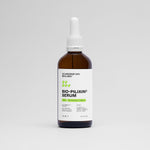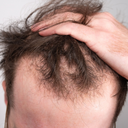Swimming is a beloved activity for fitness and relaxation, but frequent exposure to chlorinated water can take a toll on your hair. Many swimmers and pool enthusiasts notice dry, brittle strands or increased shedding after regular dips, leading to the question: Can chlorine cause hair loss? While chlorine itself doesn’t directly destroy hair follicles, it can weaken hair structure, cause breakage, and irritate the scalp—factors that contribute to the appearance of hair loss. In this article, we’ll explore how chlorine damages hair, why it may lead to shedding, and practical ways to protect your locks while enjoying time in the pool.
Table of content
Can Chlorine Cause Hair Loss?
Yes, chlorine can contribute to hair loss indirectly by damaging the hair shaft and irritating the scalp. Chlorine strips natural oils from hair, weakens its protein structure, and disrupts the scalp’s pH balance, leading to dryness, breakage, and inflammation. While chlorine doesn’t cause permanent follicle damage, the cumulative effects of repeated exposure can result in hair thinning or temporary shedding, especially in individuals with pre-existing hair or scalp conditions.
How Chlorine Affects Hair Health
Chlorine is a chemical disinfectant used in pools to kill bacteria and algae. While it keeps water safe for swimming, it has several adverse effects on hair:
1. Strips Natural Oils
Chlorine is alkaline (high pH) and binds to the natural oils (sebum) that coat and protect hair. This leaves hair dry, porous, and prone to tangling and breakage.
2. Breaks Down Keratin
Hair is primarily made of keratin, a protein that gives it strength and elasticity. Chlorine oxidizes and breaks down keratin bonds, weakening the hair shaft and causing split ends and snap-offs.
3. Causes Scalp Irritation
Chlorine can irritate the scalp, leading to dryness, itching, or dandruff. Chronic inflammation may disrupt the hair growth cycle, triggering temporary shedding (telogen effluvium).
4. Fades Hair Color
Chlorine interacts with hair dye, causing color-treated hair to fade or develop a greenish tint (due to copper compounds in pool water). This damage further weakens hair structure.
Is Chlorine-Related Hair Loss Permanent?
Hair loss caused by chlorine is typically temporary and results from breakage rather than follicle damage. However, repeated exposure without proper care can lead to cumulative harm, making hair increasingly fragile. If chlorine triggers scalp inflammation or infections (e.g., folliculitis), prolonged shedding may occur until the scalp heals.
Who Is Most at Risk?
Certain individuals are more susceptible to chlorine-related hair issues:
- Frequent Swimmers: Competitive swimmers or those who swim daily face higher exposure.
- Color-Treated or Chemically Processed Hair: Bleached, permed, or relaxed hair is already weakened and more vulnerable.
- Dry or Curly Hair Types: Naturally dry or curly hair lacks moisture and is prone to chlorine-induced brittleness.
- Sensitive Scalps: Those with eczema, psoriasis, or dermatitis may experience exacerbated irritation.
How to Protect Hair from Chlorine Damage
Prevent chlorine-related hair loss with these proactive steps:
Before Swimming:
- Wet Hair with Fresh Water: Soak hair in non-chlorinated water before entering the pool. Saturated hair absorbs less chlorine.
- Apply a Protective Layer: Coat hair with coconut oil, olive oil, or a silicone-based serum to create a barrier against chlorine.
- Wear a Swim Cap: A snug silicone or latex cap minimizes direct contact with chlorinated water.
After Swimming:
- Rinse Immediately: Wash hair with fresh water and a gentle, sulfate-free shampoo to remove chlorine residues.
- Use a Chelating Shampoo: Once a week, use a shampoo designed to neutralize chlorine and metals (e.g., UltraSwim).
- Deep Condition: Replenish moisture with a hydrating mask containing ingredients like shea butter, argan oil, or hyaluronic acid.
Long-Term Care:
- Trim Regularly: Remove split ends every 6–8 weeks to prevent breakage from traveling up the hair shaft.
- Strengthen with Protein Treatments: Use protein-rich products (e.g., hydrolyzed keratin) monthly to rebuild hair structure.
- Maintain Scalp Health: Use anti-inflammatory scalp treatments (e.g., tea tree oil) to soothe irritation.
Repairing Chlorine-Damaged Hair
If your hair is already damaged, try these restorative measures:
1. Apple Cider Vinegar Rinse
Mix 1 part apple cider vinegar with 3 parts water. Rinse hair to restore pH balance and remove chlorine buildup.
2. DIY Hair Masks
Combine avocado, honey, and yogurt for a moisturizing mask, or use egg whites and olive oil for a protein boost.
3. Leave-In Conditioners
Apply a leave-in conditioner daily to protect against further dryness and breakage.
Debunking Myths About Chlorine and Hair Loss
Myth 1: “Chlorine Kills Hair Follicles”
Chlorine doesn’t destroy follicles but damages the hair shaft. Hair regrows once breakage is minimized.
Myth 2: “Only Swimmers Get Chlorine Damage”
Even occasional swimmers can experience dryness, especially with chemically treated hair.
Myth 3: “Clarifying Shampoos Fix Everything”
Overusing clarifying shampoos can strip natural oils. Balance with hydrating products.
When to See a Dermatologist
Consult a professional if you experience:
- Persistent scalp redness, itching, or flaking.
- Clumps of hair shedding with roots attached.
- Signs of infection (e.g., pus, blisters).
Conclusion
Chlorine can indeed contribute to hair loss by weakening hair structure and irritating the scalp, but this damage is usually reversible with proper care. By pre-treating hair before swimming, rinsing thoroughly afterward, and maintaining a restorative hair care routine, you can enjoy the pool without sacrificing your hair’s health. If breakage or shedding persists, consult a dermatologist to address underlying issues and restore your hair’s strength and vitality.
Tired of Thinning Hair? Try a Clinically Tested Serum.
Looking for a natural way to regrow hair and achieve a thicker, fuller head of hair? Ditch the stinging nettle for hair loss – Bio-Pilixin Serum is a drug-free hair activation serum that delivers clinically tested results.
Here's why Bio-Pilixin is superior:
- Clinically Tested Results: 93% of users saw a reduction in hair loss, and 73% experienced increased hair density.
- Safe and Natural: Unlike harsh chemicals, Bio-Pilixin uses plant growth factors derived from stem cell technology to nourish hair follicles and stimulate growth.
- Fast-Acting: See visible results in as little as 45 days (most typically see results within 150 days).
Stop wasting time on unproven remedies. Bio-Pilixin is the safe, natural serum you've been searching for.
Read more:
- The 11 Best Dermatologists Recommended Shampoos To Buy In the UK (2025)
- 13 Best Shampoos For Volume To Buy in the UK (2025)
- The 7 Best Shampoo For Older Women To Buy in 2025
As your leading source for hair health information over the past 4 years, we never compromise on accuracy. When it comes to your health, you deserve information you can truly rely on - and earning your trust is our top priority.
Here's how Scandinavian Biolabs ensures every piece of content meets the highest standards of accuracy and integrity:
- Credentialed Experts: Our reviewers are actively practicing doctors and medical researchers
- Stringent Reviews: Content undergoes rigorous editing by subject specialists and review by a practicing doctor.
- Evidence-Based: We rely on well-established research from trusted scientific sources like peer-reviewed journals and health authorities.
- Full Transparency: Our editorial standards, writer credentials, reviewer credentials, correction process, and funding are all publicly documented.
- Independent Voice: While we do promote products, we operate in a vacuum to business operations. Our main goal is just an unwavering commitment to providing medically-sound guidance.
You can count on Scandinavian Biolabs to consistently deliver the trustworthy health information you deserve. Read our Editorial Standards.






